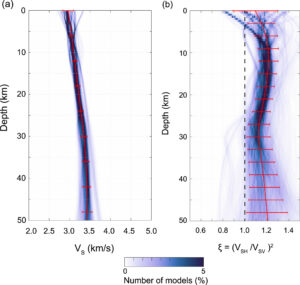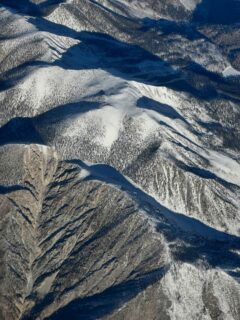The largest marsquake (S1222a) ever recorded occurred on the 1222nd Martian day of the InSight mission. It had a magnitude of 4.7 ± 0.2 and a high signal-to-noise ratio about 164,000 times larger than the second-largest event. This was the first quake to generate both Love and Rayleigh waves, making it a great candidate to constrain seismic anisotropy away from the lander.

We measured the group velocity dispersion curves of the minor arc (i.e., that take the shortest path between the event and the station) Rayleigh (R1) and Love (L1) waves, and inverted the data using different modeling approaches. From R1 and L1, we obtained the first constraints on seismic anisotropy on Mars away from the lander, with horizontally polarized shear waves faster than vertically polarized shear waves (VSH>VSV) in the crust, between 10 km and 30 km depth. Our preferred explanations include an alternation of isotropic basalt layer deposit and sedimentation caused by volcanic eruption or the presence of isotropic layered intrusions due to an impact. Our manuscript was published in the AGU special section “The Large Marsquake of Sol 1222” dedicated to S1222a.
Beghein, C., Li., J., Weidner, E. et al. (2022), Crustal Anisotropy in the Martian Lowlands from Surface Waves, Geophys. Res. Let., 49 (24), e2022GL101508, doi:10.1029/2022GL101508
The best-fitting models can be downloaded here.































































